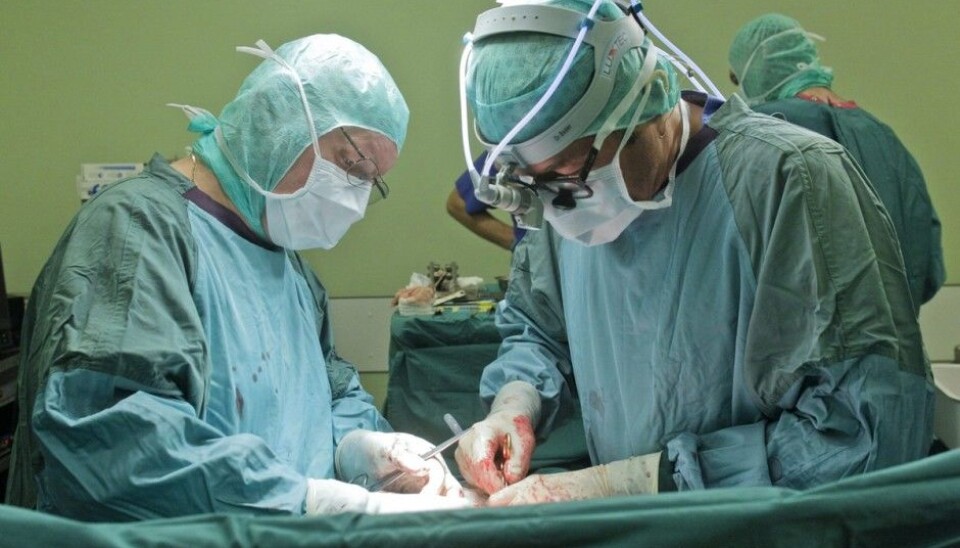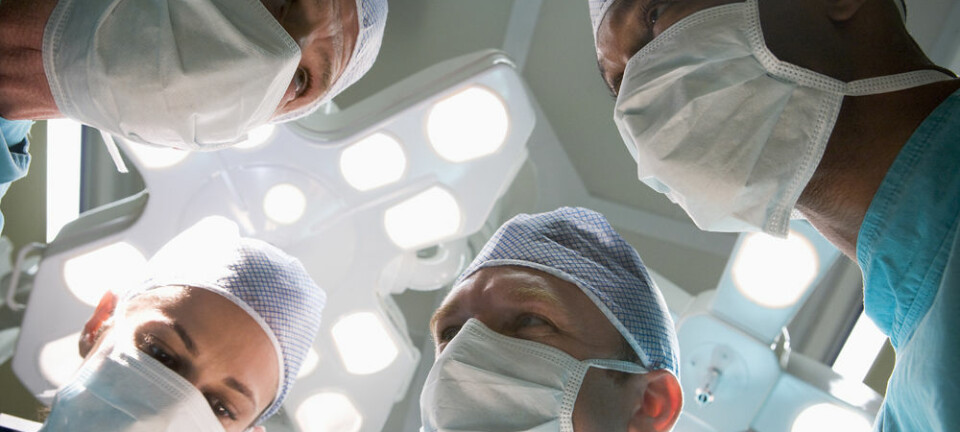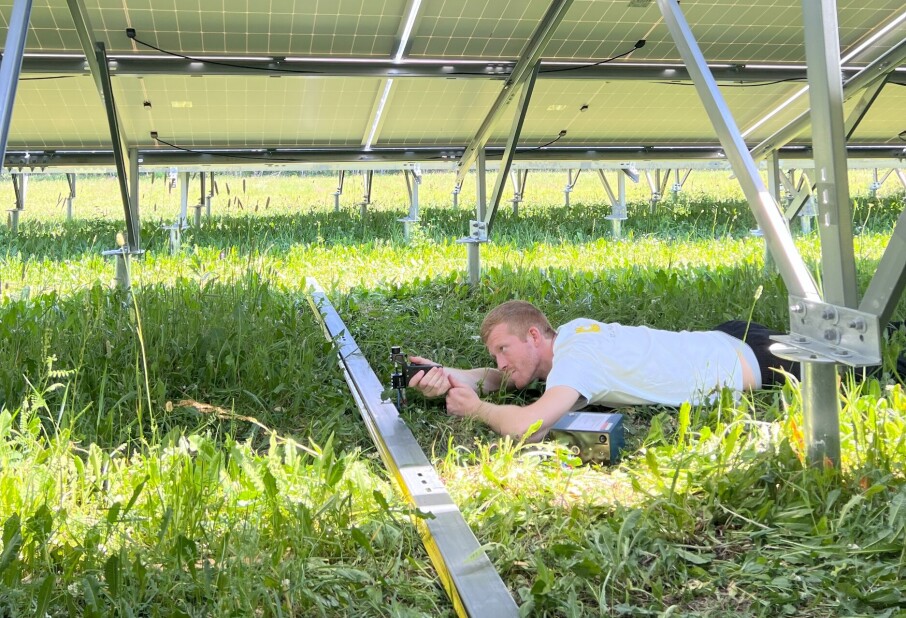
Surgery in Norway just a bit riskier than in Sweden
A new study shows that there were more surgical errors in Norwegian hospitals than in Swedish ones in 2013. Ninety of the Swedish and Norwegian patients whose journals were used in the study died from what are categorised as “adverse events”.
It’s no joke that the most dangerous place to be is a hospital. In Norway some 13 percent of hospital patients suffered some form of hospital injury, or adverse events, as they are called in the study. In Sweden there were a few more – 14.4 percent.
The study was recently published by the British Medical Journal website BMJ and used nearly 11,000 Norwegian patients’ medical records and a little over 19,000 Swedish patient records, all from 2013.
The researchers compared serious and less serious patient injuries and errors in the two countries. All in all the risks were fairly equal.
But certain differences in frequency were seen in the types of injuries patients can suffer when hospitalised in either of the two Scandinavian countries.
More complications after surgery
A considerably larger share of Norwegian patients suffered surgical complications.
Records showed that some 0.9 percent of patients operated on in Swedish hospitals suffered surgical complications. The share in Norway was over twice as high, at 1.9 percent.
A higher share of Norwegian patients also suffered severe surgical complications.
“More patients suffered from errors that left them with permanent injuries. This can probably be attributed to a higher number of surgical complications here,” says Researcher Ellen Tveter Deilkås at Akershus University Hospital (Ahus).
Deilkås is chief physician, researcher and project leader of the Ahus health services research unit.
While 0.7 percent of Norwegian patients suffered permanent injuries, just 0.4 percent of Swedish patients were so unfortunate.
Norwegian patients were generally more apt to develop pneumonia than their Swedish counterparts.
More bedsores in Sweden
Swedish patients, however, were more likely to suffer bedsores, injuries from falls and other unspecified adverse events.
Among other things, relatively twice the share of Swedish patients (1.2 percent) ended up with pressure ulcers than Norwegian patients.
But the study indicates that Swedish surgeons might be said to have steadier hands.
Patient injuries are defined as accidental physical harm caused my medical treatment which requires extra supervision, extra treatment or whole new hospital admittance.
Causing 90 patient deaths
The study covers everything from infections and allergic reactions to more serious injuries such as blood poisoning, pneumonia infections from breathing apparatuses and in worst case – deaths.
The injuries are grouped according to the treatment they require, whether they lead to a longer stay in hospital, cause permanent disabilities and injury, trigger the need for life-saving procedures or lead to a patient’s death.
Such fatal consequences were suffered by about 0.3 percent of the patients. This rate was about the same in both countries. In other words, in 2013, 90 of the random Norwegian and Swedish patients covered by the study died from mistakes in treatment.
If this sum is multiplied by the total number of hospital admittances that year, we can estimate that nearly 5,700 Norwegian and Swedish patients die in hospitals because of patient injuries annually.
Urinary tract infections
Urinary tract infections are clearly the most common adverse events in total, affecting 220 patients in Norway in the random selection of records from 2013.
“If we multiply this by the total number of hospital admittances, this means nearly 12,000 Norwegian patients annually suffer urinary tract infections contracted in hospitals,” says Deilkås.
In the Swedish selection of patients – nearly twice as large as there are about twice as many Swedes as Norwegians – 285 contracted urinary tract infections.
In total the analysis was based on about 11,000 Norwegian hospital patient medical records and 19,000 Swedish ones.
What causes the differences?
What could be causing the differences between Sweden and Norway?
“We don’t have that information. But we do know that the nursing factor is lower in Sweden than in Norway,” says Deilkås.
She thinks this could explain why Swedish patients are more prone to bedsores and injuries from falls.
The difference in surgical injuries might be attributed to Sweden getting an earlier start in the centralisation of hospital functions, according to the researcher. Centralisation generally involves the shutting down of smaller local hospitals.
“The centralising of surgery started later in Norway and the degree in which we centralise functions is politically controversial. But this could possibly lead to a decrease in such injuries in Norway,” she says.
More operations per capita in Norway?
It is also possible that a greater share of hospital patients in Norway undergo surgery than in Sweden.
“We haven’t investigated this,” says Deilkås.
The researchers think the study should be appeal to Swedish and Norwegian authorities to ensure better patient safety.
The Norwegian-Swedish study was conducted on the initiative of the Nordic Council of Ministers. The idea was to chart differences as a step in finding ways of reducing injuries incurred in hospital.
The Norwegian Government launched a national patient safety campaign in in 2011 to raise competence and reduce patient injuries.
Third largest cause of death
In another study published by BMJ in May 2016, researchers at Johns Hopkins Hospital in Baltimore, Maryland, found that medical errors comprise the third biggest cause of death in the USA, after cardiovascular disease and cancer. Chronic obstructive pulmonary disease (COPD) is in fourth place.
They estimated that 251,000 American deaths can be attributed to medical errors.
“This is not news to the medical profession,” asserts Ellen Tveter Deilkås.
The American researchers call for the opportunity to freely report such fatal errors in the USA’s national causes of death statistics.
-------------------------------------
Read the Norwegian version of this article at forskning.no
Translated by: Glenn Ostling
Scientific links
- Ellen Tveter Deilkås et al.: Exploring similarities and differences in hospital adverse event rates between Norway and Sweden using Global Trigger Tool. BMJ, 21 March 2017. doi:10.1136/bmjopen-2016-012492
- Martin A Makary mf: Medical error—the third leading cause of death in the US. BMJ. 3. Mai 2016. doi: https://doi.org/10.1136/bmj.i2139
































